Robert Mango
Where do you live: NYC and Delaware River, Narrowsburg
Your education: School of the Art Institute of Chicago (Saturday classes), University of Illinois BFA, University of New Mexico MFA
Describe your art in three words: Curiosity, skill, passion
Your discipline: Painter and sculptor
Website | Instagram
Your work often deconstructs and reconstructs the human form. What draws you to this process, and what does it reveal for you?
For me, it’s inherent to my approach to explore everything I encounter, to take it apart, look for its origins, and then imagine where the artist has been. Like puzzle pieces that defy any apparent rhyme or reason, and even time and place, as the world becomes one fleeting passage through a collective consciousness that is never at rest. Often the figure becomes a self-portrait, but in disguise, set in a background whose symbolic meaning is as important as its visual beauty. The placement of that figure can feel arbitrary, as if he’s buoyant, bobbing in a moving current, watching and remembering. Deconstructing and reconstructing the human form is a way to connect memory, invention, and history, and allows you to show not just the body, but the journey it carries through time.
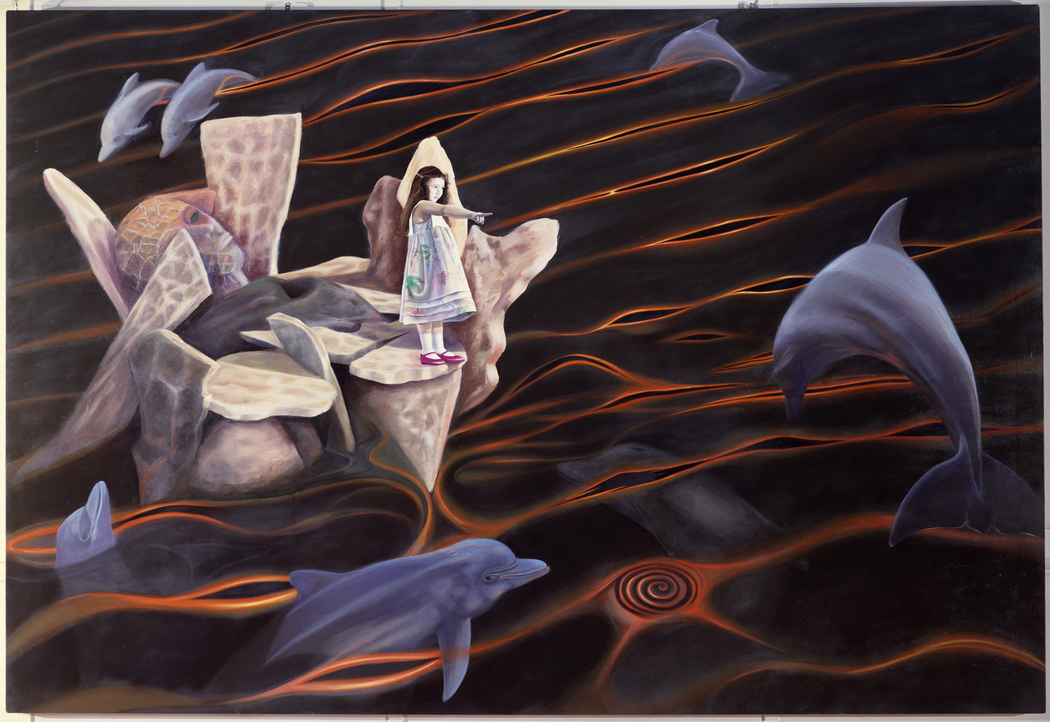 Robert Mango | Dierde’s View | 1982
Robert Mango | Dierde’s View | 1982
You mentioned that your work bridges classical traditions and contemporary American art. Can you elaborate on how these influences coexist in your practice?
My roots are in classical disciplines, including proportion, chiaroscuro, and draftsmanship—skills I acquired at the School of the Art Institute of Chicago between the ages of 15 and 17. But my sensibilities were shaped just as much by the raw, fearless methods of Rauschenberg, Rivers, Duchamp, and the Surrealists, as well as by the literary and cinematic worlds of Nietzsche, Fellini, and the Beat poets. Those worlds coexist in my work because I don’t see them as opposite; the precision and permanence of the classical, and the improvisation and absurdity of the contemporary, are actually closely aligned. So in my studio, a figure built with all that classical training might be dropped into a Fellini-esque scene where anything can happen.
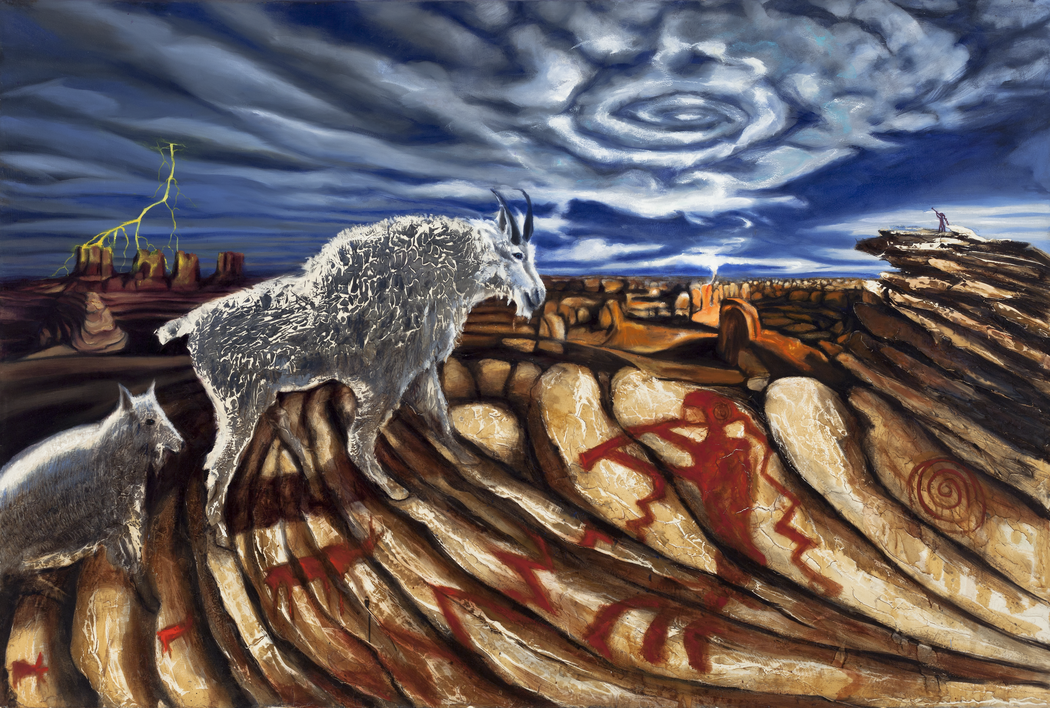 Robert Mango | Harbinger | 2015
Robert Mango | Harbinger | 2015
How do you develop the visual language in your pieces — is it intuitive, symbolic, or narrative-driven?
It’s all of those at once. The intuition comes from years of running. I’d get whole images in my head mid-stride, in that oxygen-debt zone where your conscious mind steps aside. Symbols just surface without me forcing them. And whether I plan it or not, a story starts to take shape once the pieces are down. I’m not looking to illustrate a fixed idea. I want to give form to something I’ve lived, felt, or half-remembered, and let it keep breathing.
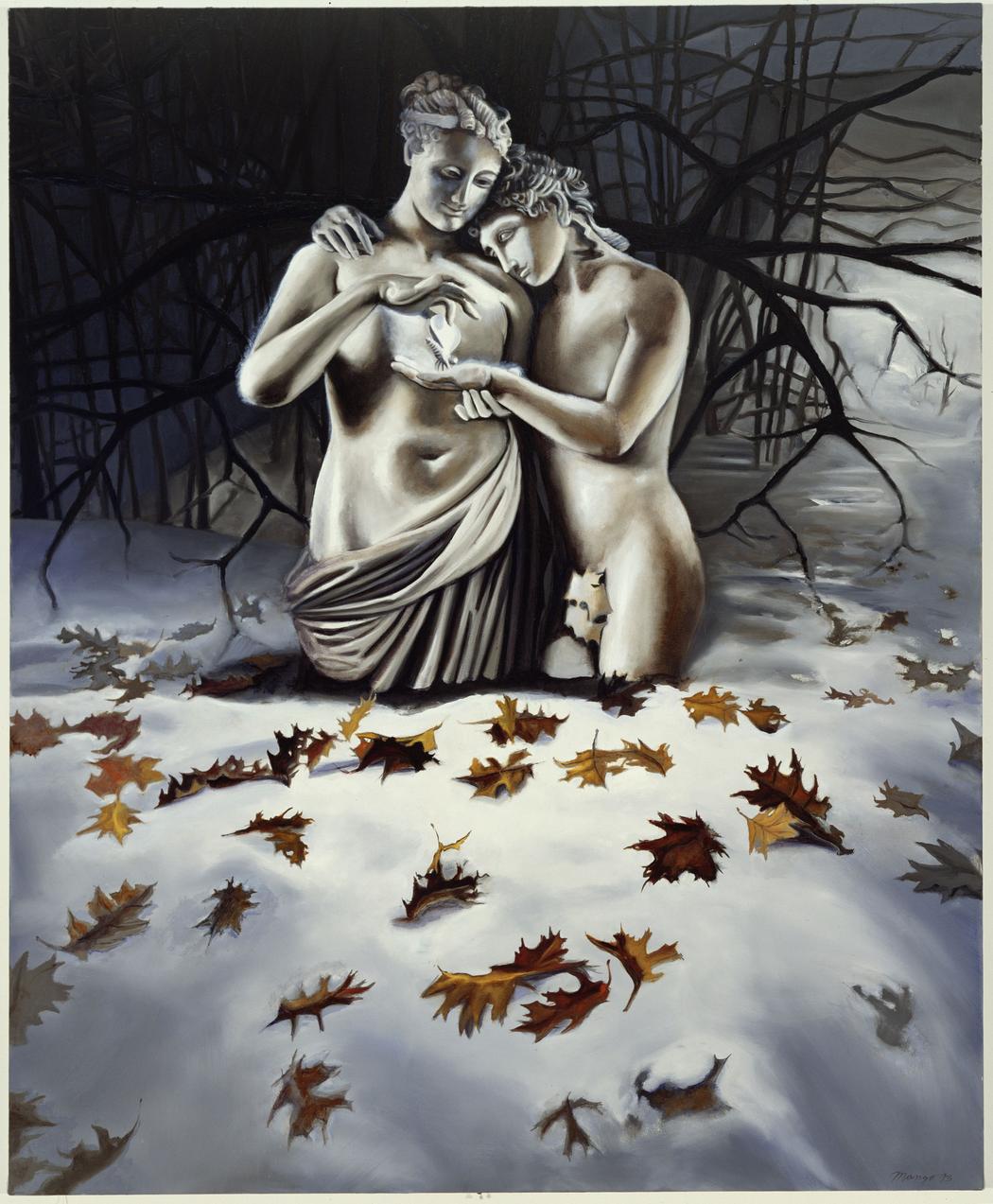 Robert Mango | Homage Neoclassicism
Robert Mango | Homage Neoclassicism
There is a strong presence of surrealism and symbolism in your compositions. What role does the unconscious mind play in your creative process?
The unconscious is at the heart of everything I do. Since the late 1960s, I’ve cultivated ways to reach it like long-distance runs first thing in the morning, when dream imagery is still vivid, which has proven to be one of the most reliable ways. Duchamp, the Surrealists, and the Beats also taught me that the irrational and the symbolic can be more revealing than the literal. My role is to translate whatever rises into something that feels inevitable, even if its meaning defies explanation.
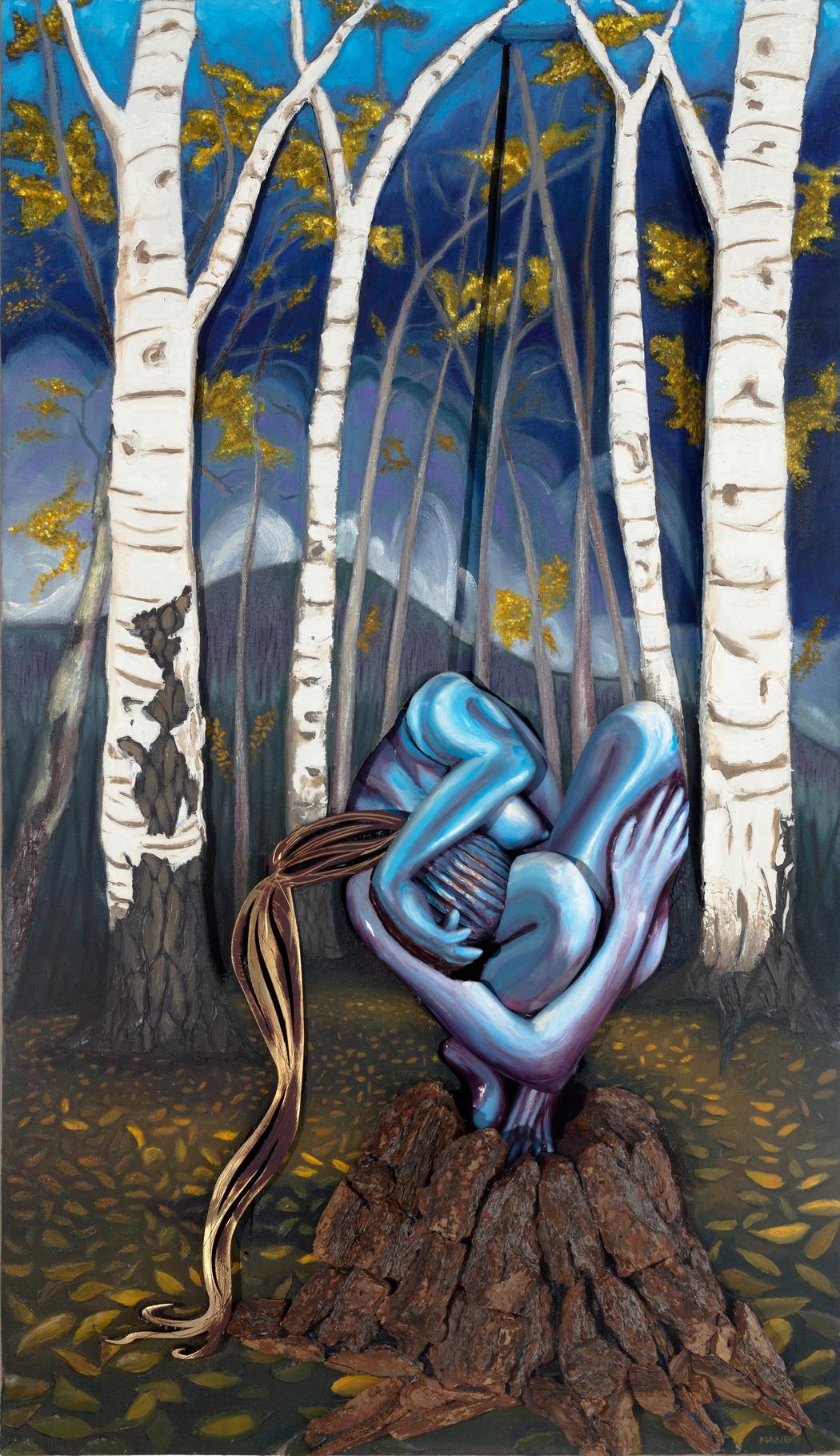 Robert Mango | La Cathedral | 2017
Robert Mango | La Cathedral | 2017
Do your figures represent specific characters, archetypes, or states of being? Or are they entirely abstracted expressions?
They can be all of those. In The Hero series, for instance, the figure is often an artist like me, refracted through archetypes like the warrior, the traveler, the witness. Even in my more abstracted pieces, there’s an embedded identity. The figure becomes a kind of time traveler, moving through places that are part memory, part invention, and part symbolic stage.
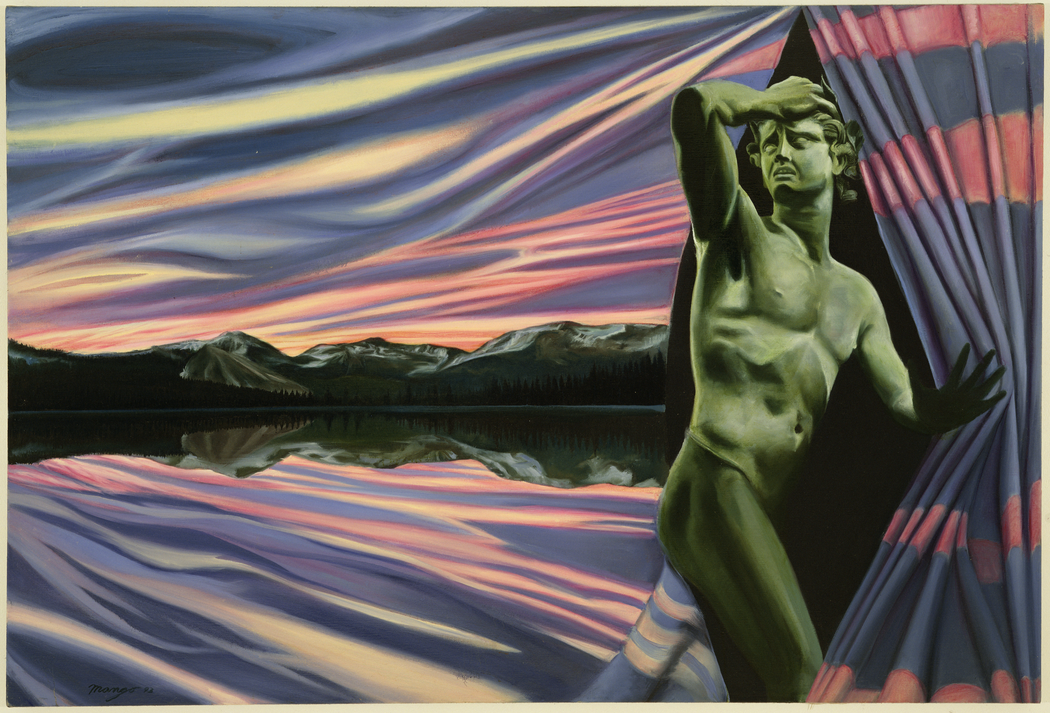 Robert Mango | Orpheus Leaving Utah | 1996
Robert Mango | Orpheus Leaving Utah | 1996
Your artworks often feel theatrical, even mythological. Are there recurring themes or stories you return to?
The journey is a constant, whether physical, spiritual, or artistic. My work often stages encounters between past and present, reason and absurdity, strength and vulnerability. Certain figures, landscapes, and symbols return, but they’re never fixed in place; they evolve like characters in a new production. There are no boundaries here, only the limits of imagination. My studio is a stage where the unconscious mind directs the performance.
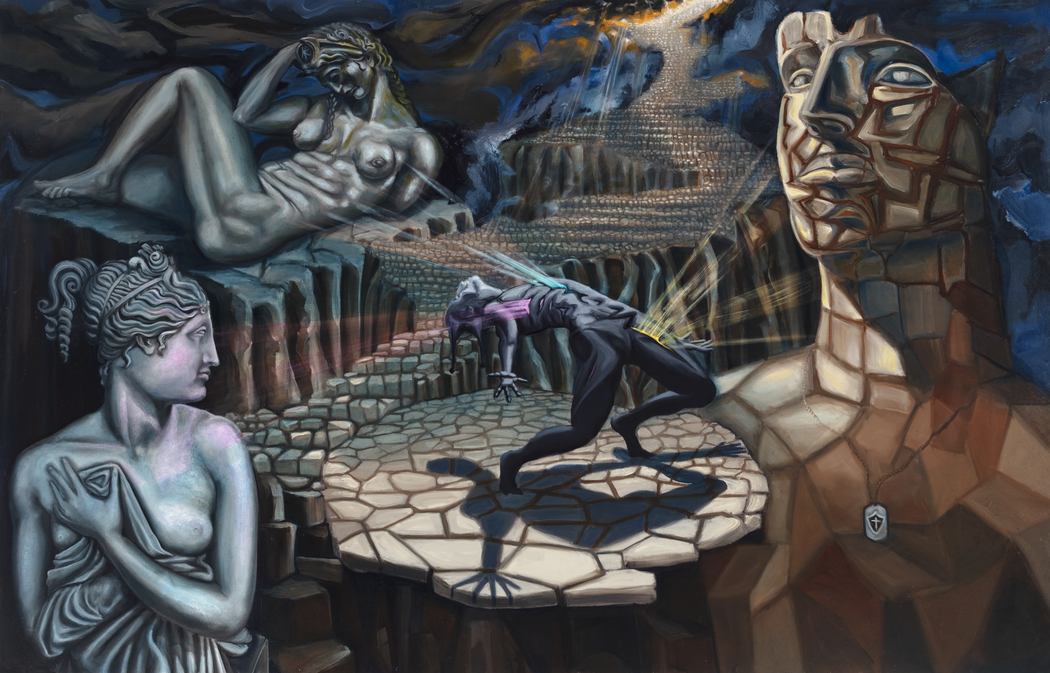 Robert Mango | Renicarnisi Medici | 2024
Robert Mango | Renicarnisi Medici | 2024
What is your approach to color and texture — especially the vibrant, glossy forms layered over rough or architectural backgrounds?
Color and texture are structural in my work. I’m drawn to the tension between the refined and the raw. A glossy, vividly colored form can feel like an ideal or a memory polished over time; set it against a rough, architectural ground, and it gains weight and grit. Years of working fluently across different media have taught me to treat each surface like a character with its own personality. Layering them is like layering memory, dream, and observation. They may overlap,and interact, but they never fully merge.

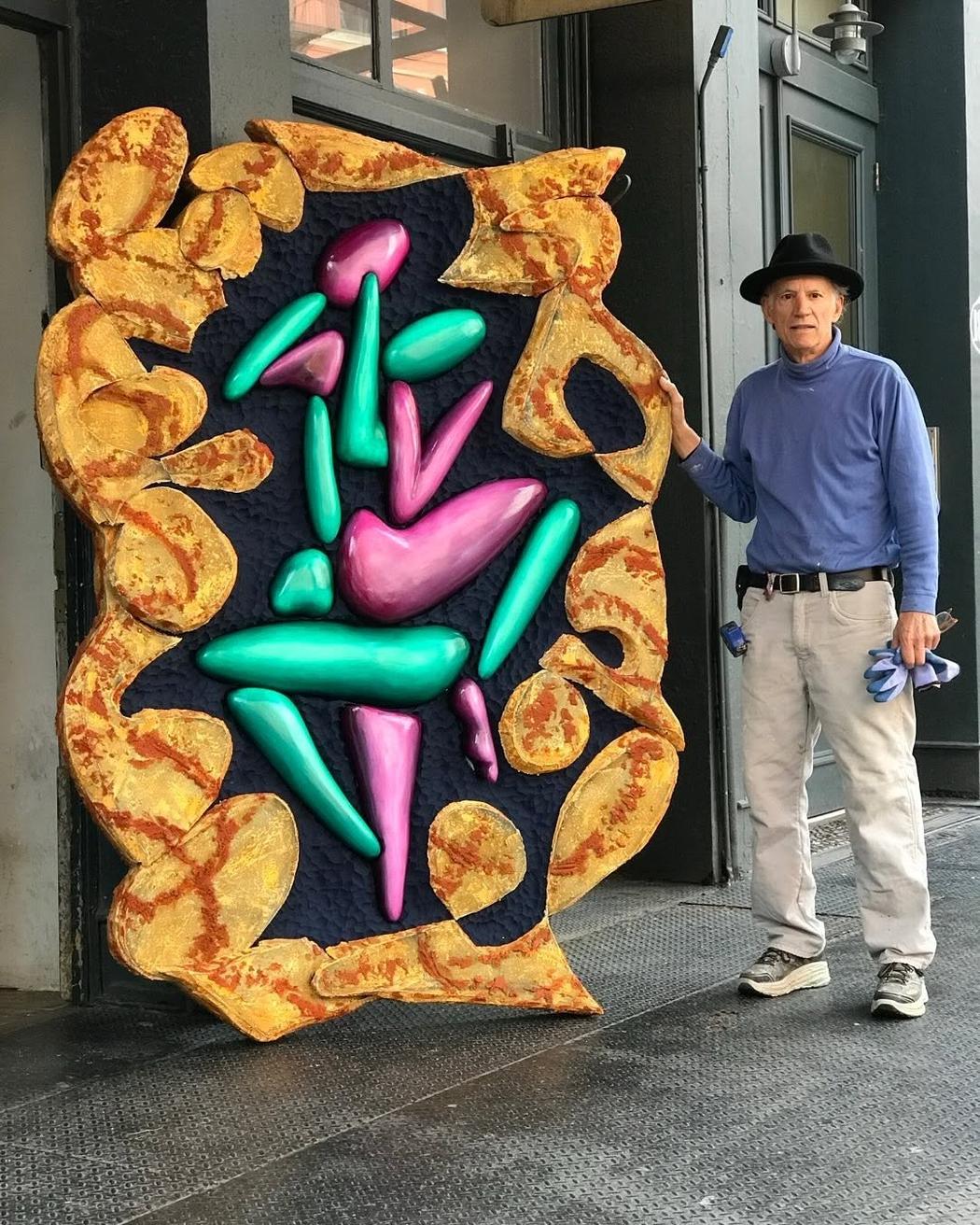
Leave a Reply